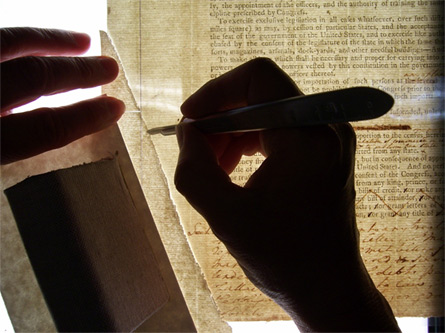Our Heritage at Risk
Most of us rely on libraries – either the traditional brick-and-mortar facilities or any of a burgeoning number of online compendia. These libraries collect important (and some not so important) documents, things – and, increasingly, digital files. But from books to videotapes and CD ROMs, all data-, audiovisual- and document-storage media have a limited shelf life, so to speak. That’s why a small but dedicated cadre of conservators and preservationists spend their careers trying to keep evidence of our cultural heritage from spoiling.








